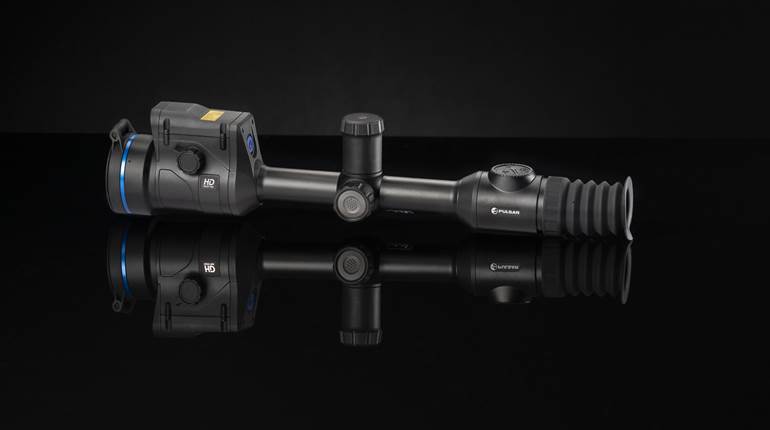
Colt’s Model 1877 Lightning revolver (occasionally confused with its 1884 Lightning pump-action rifle) was the company’s first double-action handgun, brought out to compete with the double-action British bulldog revolvers gaining in popularity at the time. Besides, after the successful Single Action Army, it was only logical that Colt’s next revolver would be a “self-cocker.”
In fact, if you took a three-dimensional image of the Single Action Army, reduced it by approximately 20 percent, then slimmed and re-contoured the grip into a bird’s head shape but retained the angled ejector-rod housing and flip-open loading gate, you’d have the basic design of the Colt Model 1877, or, as it was initially cataloged, “Colt’s Double Action, Self-Cocking Central Fire Revolving Pistol.”
 Priced at $14 and chambered in .38 Long Colt and the less-commonly encountered .32 Long Colt (a .41 Long Colt was soon added), the guns could also chamber the “short” versions of these cartridges. Barrel lengths usually ran from 2" to 3½" without ejectors and 4½" to 7½" with ejectors. The guns were blued and casehardened or nickeled, with gutta percha or checkered rosewood stocks; engraved guns with pearl or ivory stocks could be special-ordered.
Priced at $14 and chambered in .38 Long Colt and the less-commonly encountered .32 Long Colt (a .41 Long Colt was soon added), the guns could also chamber the “short” versions of these cartridges. Barrel lengths usually ran from 2" to 3½" without ejectors and 4½" to 7½" with ejectors. The guns were blued and casehardened or nickeled, with gutta percha or checkered rosewood stocks; engraved guns with pearl or ivory stocks could be special-ordered.
To add to their appeal, B. Kittredge & Co.—one of Colt’s largest distributors—gave each of the caliber-designated Model 1877s its own identity: the .38 Colt was The Lightning; the .41 caliber was The Thunderer; and the .32 Colt was The Rainmaker. Although these names were never used by Colt, they became common terminology for the guns.
Unfortunately, the Model 1877 was a mechanically intricate affair; the trigger had multiple humps and curves, and the hammer was equally complicated. But the real problems were the springs, which tended to break, rendering many of the guns as single-actions at best. In his book, Colt Firearms (From 1836), author James Serven noted, “ … anyone who has ever taken one of these Colts apart will testify as to the complexity and delicate adjustments of the mechanism.” Still, the Model 1877s found favor with such notables as John Wesley Hardin and William “Billy the Kid” Bonny, plus hundreds were ordered by police departments and express companies. In all, a total of 166,849 revolvers were made from 1877 to 1909.
This 85-percent Colt Lightning, Serial No. 1375XX, features a 4½" barrel and was made in 1902. The bluing and casehardened colors are strong with minimal holster wear, but the stocks show signs of oxidation. At one time, this revolver was owned by NRA Life member Roy Rogers (which would boost its value considerably), but even without that provenance, it is still worth $1,600-$1,800.
Gun: Colt Model 1877 Lightning Revolver
Chambering: .38 Long Colt
Serial No.: 1375XX
Manufactured: 1902
Condition: NRA Very Good (Antique Gun Standards)
Value: $1,600 to $1,800 (Note: Stocks may have been replaced by the previous owner)




































